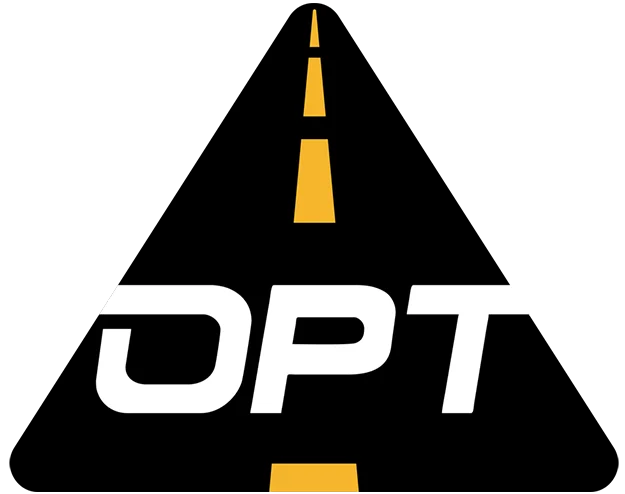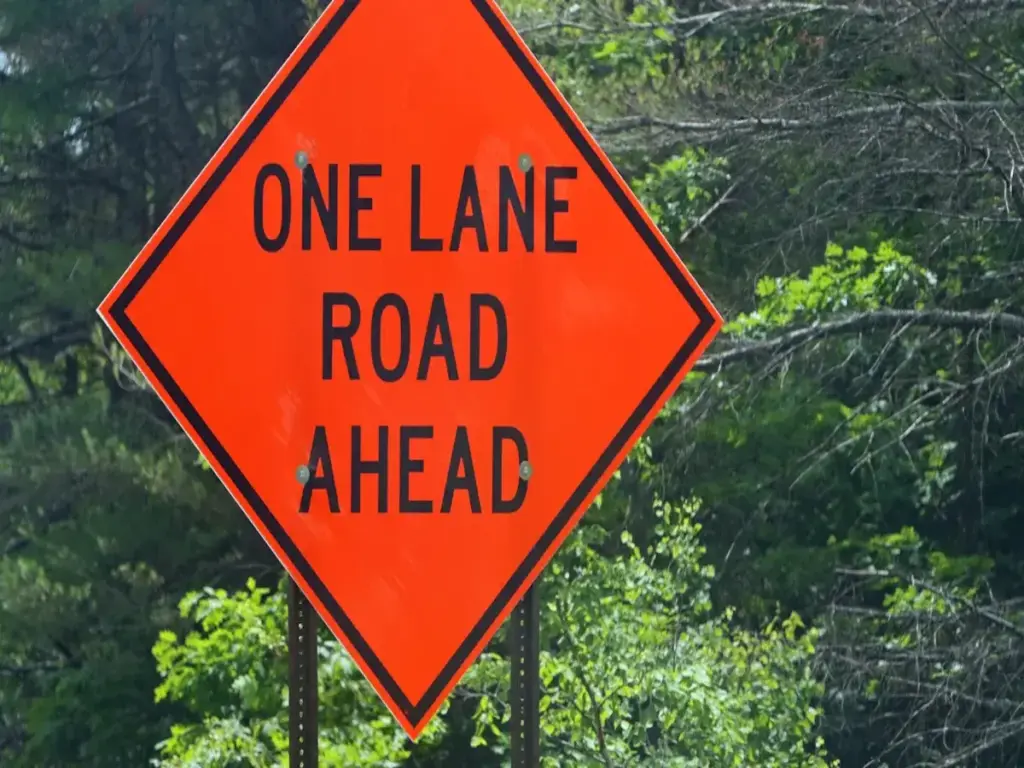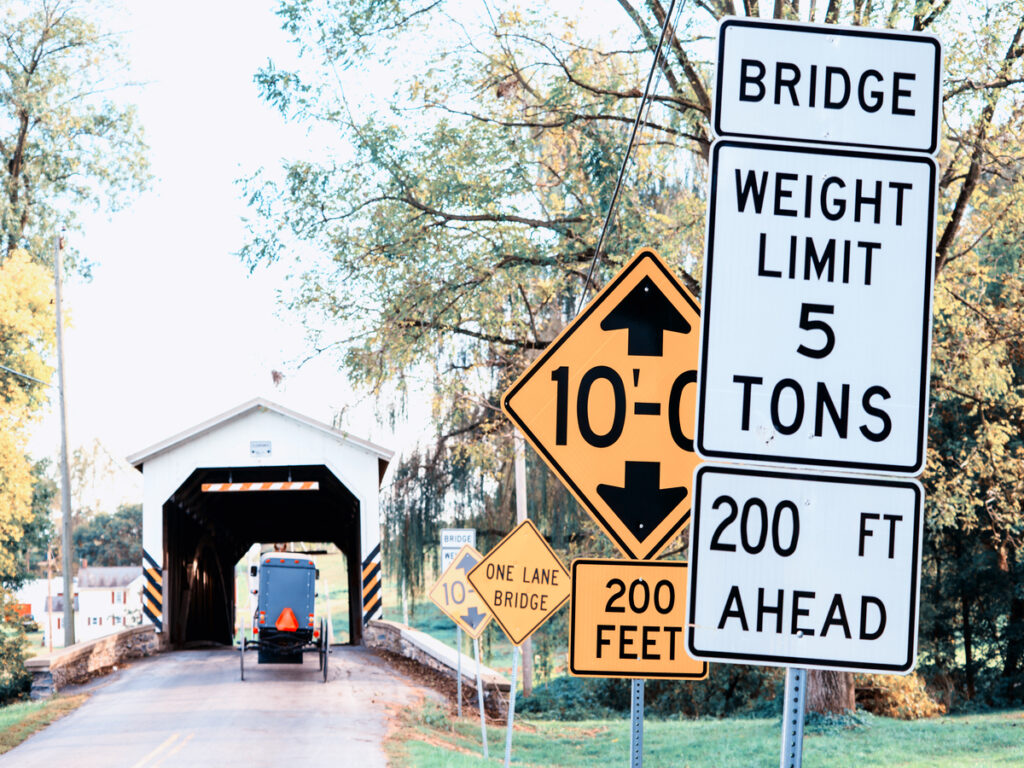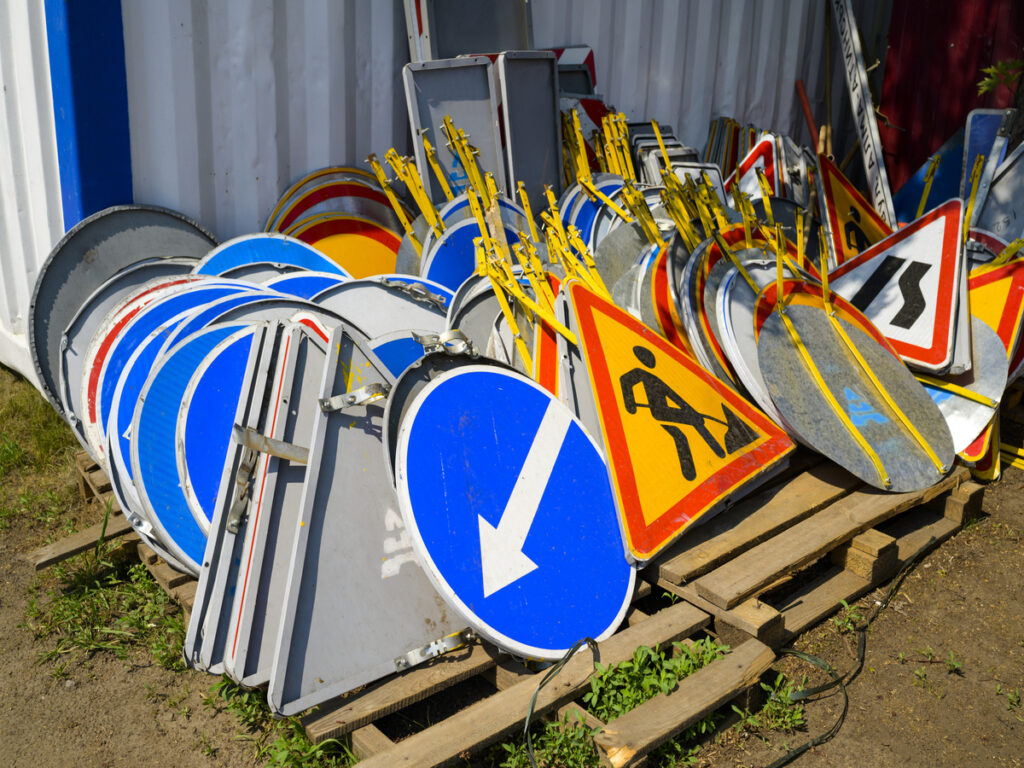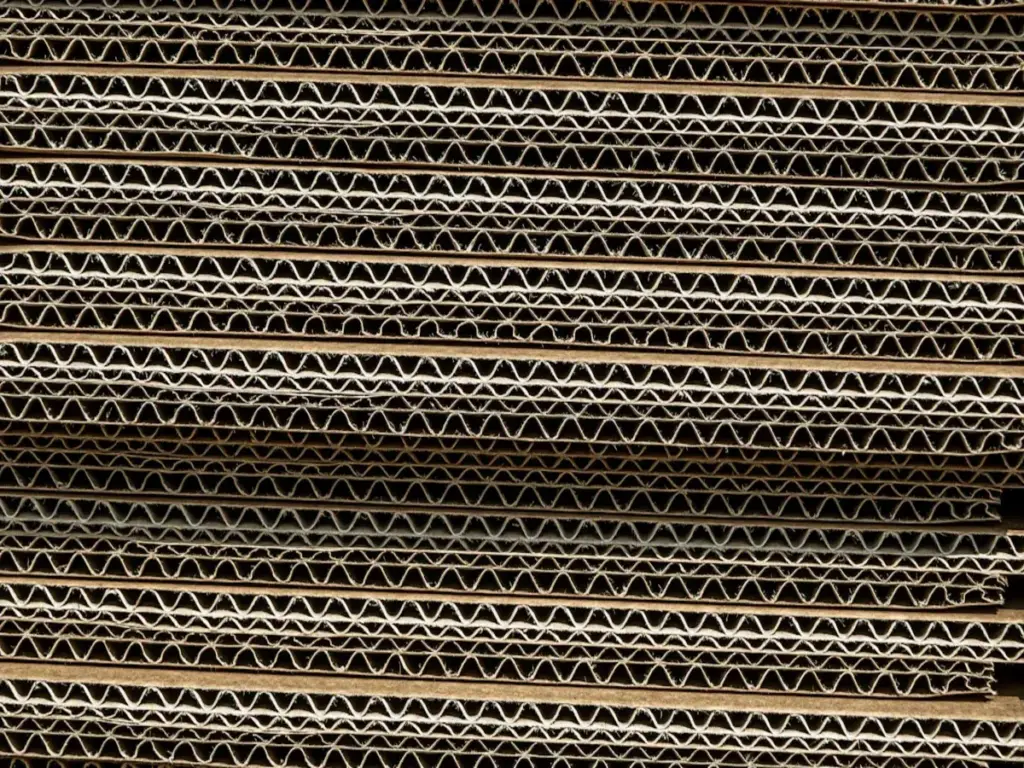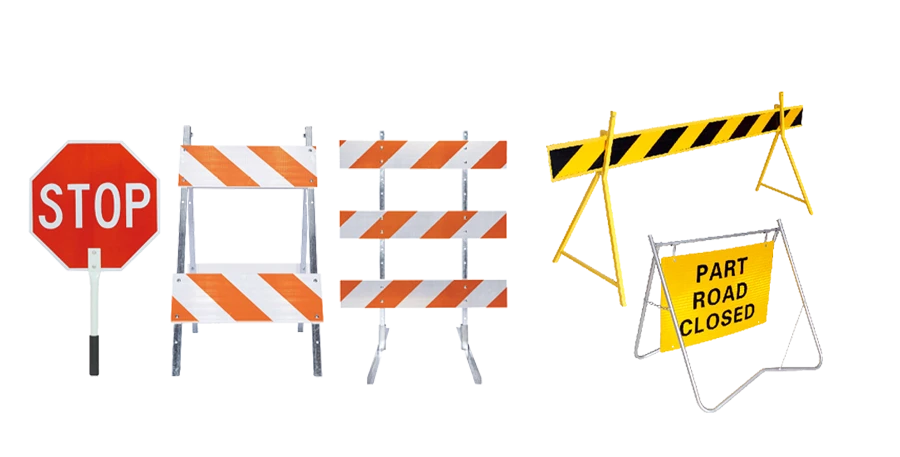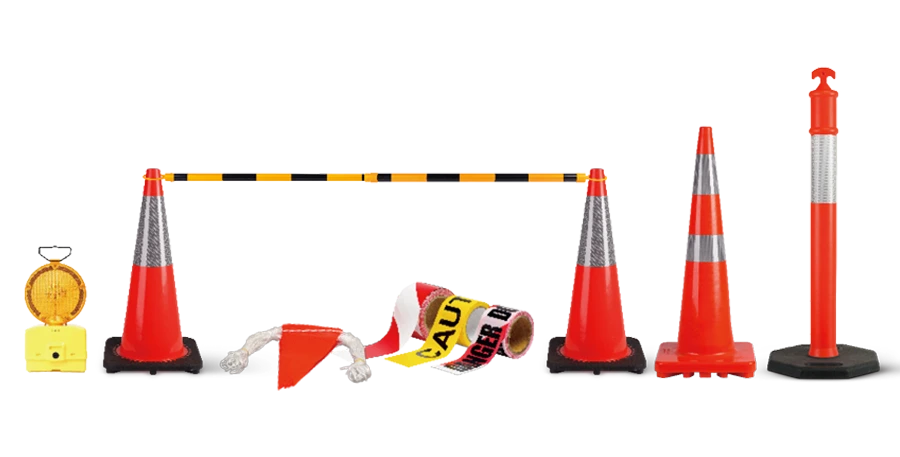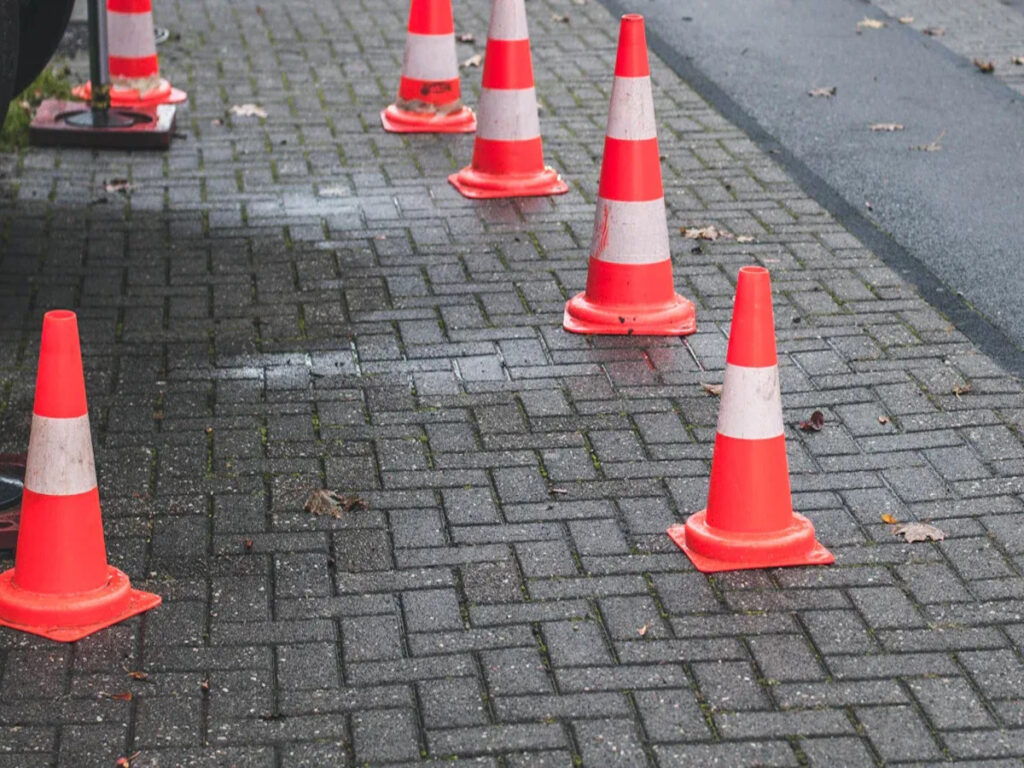
적절한 교통 콘 간격은 교통 통제 구역에서 운전자와 작업자의 안전을 유지하는 데 중요한 역할을 합니다.. 권장 거리는 속도 제한에 따라 다릅니다.. 예를 들어, ~에 40 MPH, 최대 원뿔 간격은 다음과 같습니다. 20 발은 테이퍼로 되어 있고 40 접선의 피트. ~에 45 MPH, 간격이 점점 늘어납니다 30 발과 60 피트. 속도가 다음과 같은 고속도로 50 mph 이상은 훨씬 더 먼 거리가 필요합니다..
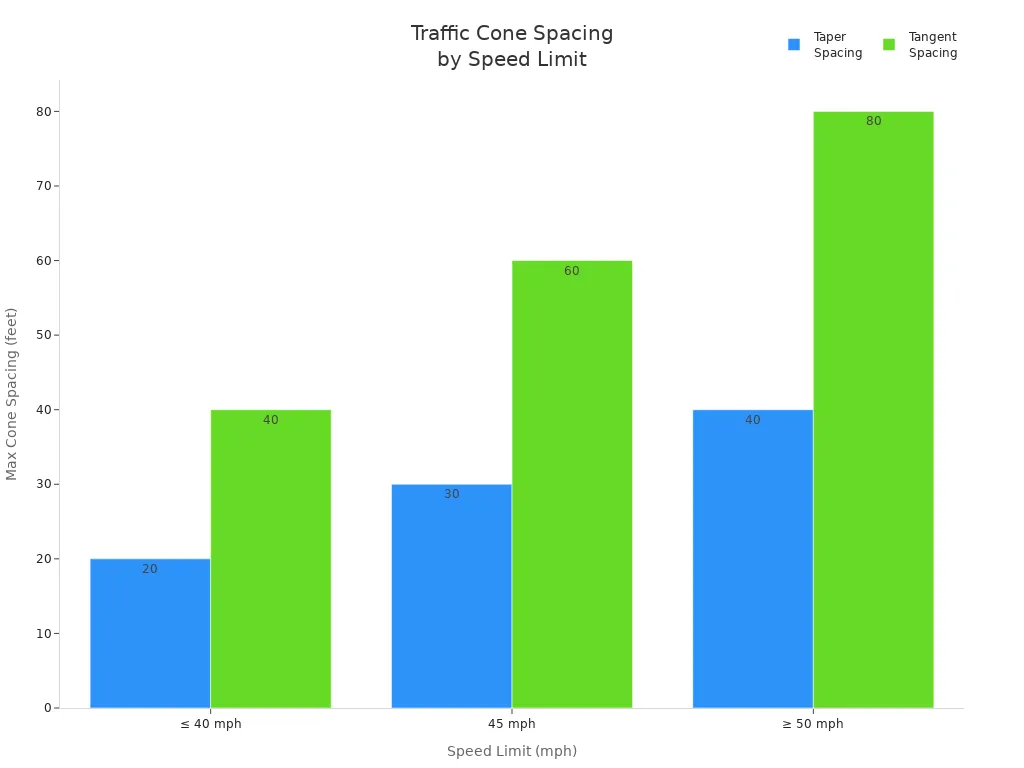
| 속도 (MPH) | 최대 원뿔 간격 (작은 초) 피트 단위 | 최대 원뿔 간격 (접선) 피트 단위 |
|---|---|---|
| ≤ 40 | 20 | 40 |
| 45 | 30 | 60 |
| ≥ 50 | 40 | 80 |
교통 통제를 위한 정확한 원뿔 간격은 사고를 예방하고 차량이 원활하게 이동할 수 있도록 도와줍니다..
~에 광교통, 우리는 고품질을 제공합니다 트래픽 콘 그리고 다른 교통 통제 제품 도로에서의 안전과 효율성을 향상시키도록 설계되었습니다.. 건설 현장을 관리하든 임시 우회로를 설정하든, 당사의 콘과 바리케이드는 교통을 안전하게 이동하는 데 필요한 가시성과 내구성을 제공합니다.. 우리의 범위를 탐색하십시오 교통 통제 솔루션 오늘!
주요 테이크 아웃
- 올바른 트래픽 콘 간격은 안전을 위해 매우 중요합니다.. 각 속도 제한에 맞는 거리를 사용하여 사고를 예방하세요..
- 원뿔 배치를 잘 하면 운전자가 보고 반응할 수 있는 충분한 시간을 확보할 수 있습니다.. 이는 앞으로 도로가 바뀔 때 안전을 유지하는 데 도움이 됩니다..
- 적절한 간격을 유지하면 교통 흐름이 원활하게 유지됩니다.. 혼란을 멈추고 작업 구역의 지연을 줄입니다..
- 콘을 내려놓을 때는 항상 도로와 날씨를 생각하세요.. 더 나은 가시성 또는 안전성이 필요한 경우 간격을 변경하십시오..
- 콘을 자주 확인하고 이동하세요.. 이를 통해 교통 통제가 안전하게 유지되고 운전자와 근로자가 원활하게 작동할 수 있습니다..
적절한 트래픽 콘 간격의 안전 이점
사고 예방
교통 콘은 작업 구역에서 사고를 막는 데 도움이 됩니다.. 작업자가 콘을 적절한 거리에 배치할 때, 운전자가 어디로 가야할지 확인. 이것은 그들이 빨리 행동하지 않도록 도와줍니다., 안전하지 않은 움직임. 연구에 따르면 올바른 원뿔 간격을 사용하면 충돌이 줄어드는 것으로 나타났습니다.. 아래 표는 속도에 따라 콘 간격이 어떻게 변하는 지 보여줍니다.:
| 속도 제한 (MPH) | 원뿔 간격 (피트) |
|---|---|
| 25 MPH | 20-25피트 |
| 40 MPH | 40 피트 |
| 55 MPH | 55 피트 |
| 70 MPH | 70 피트 |
원뿔을 교통량을 향하도록 배치하면 더 쉽게 볼 수 있습니다.. 근로자는 최소한 퇴사해야 합니다. 30 각 원뿔 사이의 피트. 이는 자동차가 따라갈 수 있는 명확한 경로를 제공합니다.. 추가 원뿔을 통해 도중에 위험이나 사물이 있는 위치를 표시할 수 있습니다.. 운전자가 안전하게 우회할 수 있도록 도와줍니다.. 이 설정을 사용하면 도로를 쉽게 따라갈 수 있고 모두가 더 안전하게 지낼 수 있습니다..
팁: 항상 작업 구역을 표시하기에 충분한 교통 원뿔을 사용하십시오.. 이를 통해 운전자는 어디로 운전해야 하는지 알 수 있고 사람들의 안전을 지킬 수 있습니다..
적절한 경고 시간
원뿔 간격이 좋으면 운전자가 미리 변화를 알아차릴 시간을 확보할 수 있습니다.. 운전자가 도로 안전 콘을 일찍 발견하는 경우, 속도를 줄이거나 안전하게 차선을 바꿀 수 있습니다. 이는 자동차가 빠르게 달리거나 자동차가 많을 때 매우 중요합니다..
좋은 원뿔 라인은 경로를 명확하고 쉽게 볼 수 있게 해줍니다.. 운전자는 멀리 있는 원뿔을 발견하고 운전 방식을 변경할 수 있습니다.. 충돌을 일으킬 수 있는 급정거나 회전을 방지하는 데 도움이 됩니다.. 올바른 콘 간격을 사용하면 사고가 줄어들고 모든 사람이 작업할 수 있는 구역이 더 안전해집니다..
- 교통 원뿔은 운전자에게 어디로 가야 하는지 알려줍니다..
- 작업 구역에서 사고를 예방하는 데 도움이 됩니다..
- 적절한 간격은 운전자가 위험에 대응할 수 있는 시간을 제공합니다..
교통 통제 구역의 효율성 이점
원활한 교통 흐름
트래픽 콘은 작업 구역에서 차량이 안전하게 이동할 수 있도록 도와줍니다.. 작업자는 콘을 올바른 거리에 배치합니다.. 운전자는 어디로 가야할지 알고 있습니다.. 이 설정으로 혼란이 멈춥니다.. 교통이 많이 느려지는 것을 방지합니다. 많은 도로 프로젝트에서 좋은 원뿔 간격이 도움이 되는 것으로 나타났습니다.. 교통체증도 적고 대기시간도 적다.
- 고속도로에서, 콘은 도로 공사 주변에서 자동차를 안내합니다.. 이 설정은 트래픽이 막히는 것을 방지합니다.. 사고의 확률을 줄여줍니다, 밤에도.
- 도로 수리 중, 작업자는 속도 제한에 따라 콘 공간을 확보합니다.. 이 방법은 운전자가 변경 사항을 조기에 확인하는 데 도움이 됩니다.. 급작스러운 차선 변경을 멈춥니다..
- 균일 한 교통 통제 장치 매뉴얼 (mutcd) 사용하라고 하더군요 20:1 테이퍼 속도. 이 규칙은 자동차가 작업 영역을 원활하게 이동하는 데 도움이 됩니다..
교통 콘은 운전자에게 명확한 경로를 제공합니다.. 운전자가 원뿔의 줄을 볼 때, 그들은 그것을 따른다. 멈추지도 않고 급회전하지도 않는다. 이 과정은 자동차가 계속 움직이는 데 도움이 됩니다.. 지연을 줄여줍니다. 콘을 올바른 방법으로 사용하면 긴급 차량이 더 빨리 통과할 수 있습니다..
메모: 원뿔을 잘 배치하면 작업 구역에서 차량이 더 빠르게 움직일 수 있습니다..
규정 준수 및 운전자 대응
트래픽 콘은 작업 영역을 표시하는 것 이상의 역할을 합니다.. 운전자가 교통 구역의 규칙을 따르는 데 도움이 됩니다.. 작업자 공간 원뿔이 오른쪽으로 이동하는 경우, 운전자는 무엇을 기대 해야하는지 알고 있습니다. 이는 운전자가 침착함을 유지하고 표지판을 따르는 데 도움이 됩니다..
수행원 MUTCD rules for cones shows drivers a safe route. This setup helps drivers follow the rules. 실수가 줄어 듭니다. For merging or transition tapers, workers put cones no more than the speed in feet apart. 예를 들어, in a 40 mph zone, cones should be 40 발. In tangent or buffer areas, spacing can be doubled. Workers should put cones closer in curves or at night.
Traffic cones help drivers react to changes. 원뿔의 간격이 오른쪽인 경우, drivers slow down or change lanes safely. 이 과정은 자동차가 계속 움직이는 데 도움이 됩니다.. It stops sudden stops and keeps everyone safe.
Traffic Cone Spacing Guidelines by Speed
Choosing the right spacing for traffic cones depends on the speed of the road. The faster vehicles move, the more space drivers need to see and react to cones for traffic control. Proper spacing helps drivers stay safe and keeps traffic moving smoothly. 다음 지침은 다양한 속도 구역에서 교통 통제를 위해 원뿔 간격을 지정하는 방법을 설명합니다..
저속 도로 (25mph 이하)
속도 제한이 있는 도로에서는 25 mph 이하, 운전자는 천천히 움직이고 반응할 시간이 더 많습니다. 작업자는 이러한 영역에서 교통 원뿔에 대해 더 가까운 간격을 사용합니다.. 이 설정은 명확한 경로를 생성하고 운전자가 어디로 가야할지 이해하는 데 도움이 됩니다..
- 작업자가 교통 콘을 배치합니다. 10 에게 15 발.
- 간격이 가까울수록 더 나은 지침을 제공하고 혼란을 줄입니다..
- 이 방법은 교통을 체계적으로 유지하고 사고 위험을 낮춥니다..
- 이 간격으로 원활한 교통 흐름을 유지하기가 더 쉽습니다..
짧은 간격으로 교통 통제를 위한 원추형 라인으로 작업 구역을 쉽게 볼 수 있습니다.. 운전자는 갑작스러운 움직임 없이 경로를 따라갈 수 있습니다.. 이 접근 방식은 학교 구역에서 잘 작동합니다., 주거 거리, 그리고 주차장.
팁: 저속 지역의 교통 통제를 위한 원뿔 간격이 더 가까워져 운전자가 자신감과 안전감을 느낄 수 있습니다..
중속 도로 (26–45mph)
중속 도로에서는 가시성과 안내 사이의 균형이 필요합니다.. 차량이 더 빠르게 이동합니다., 따라서 운전자는 교통 신호등을 보고 반응하는 데 더 많은 시간이 필요합니다.. 그만큼 균일 한 교통 통제 장치 매뉴얼 (mutcd) 이 도로에 대한 명확한 규칙을 제공합니다.
- 속도가 다음과 같은 도로의 경우 26 에게 45 MPH, 작업자는 속도 제한(피트)의 절반에 해당하는 간격을 사용합니다..
- 예를 들어, ~에 40 MPH, 교통 통제를 위한 콘은 이어야 합니다 20 발.
- 이 간격은 운전자가 작업 영역을 조기에 확인하고 속도를 조정하는 데 도움이 됩니다..
아래 표는 중속 도로의 일반적인 간격을 보여줍니다.:
| 속도 제한 (MPH) | 원뿔 간격 (피트) |
|---|---|
| 30 | 15 |
| 35 | 17.5 |
| 40 | 20 |
| 45 | 22.5 |
작업자는 교통 통제용 콘을 사용하여 차량을 차선 변경 및 장애물 주변으로 안내합니다.. 적절한 간격은 흐름을 안정적으로 유지하고 갑작스러운 정지를 방지합니다.. 이 방법은 차량 속도 제어에도 도움이 됩니다., 모든 사람을 위해이 지역을 더 안전하게 만듭니다.
메모: 중속 도로의 콘 간격에 대한 MUTCD 지침을 따르면 안전성과 운전자 반응이 향상됩니다..
고속 도로 (46+ MPH)
고속 도로에서는 트래픽 콘 사이에 훨씬 더 큰 간격이 필요합니다.. 차량은 빠르게 이동합니다., 따라서 운전자는 교통 통제를 위해 원뿔을 보고 안전하게 반응하려면 더 많은 거리가 필요합니다.. 국가 및 주 기관은 이러한 도로에 대한 명확한 규칙을 설정합니다..
- 이상의 속도로 주행하는 도로에서 46 MPH, 작업자는 트래픽 콘을 더 멀리 배치합니다..
- ~에 50 MPH, 교통 통제를 위한 콘은 이어야 합니다 40 에게 50 발.
- 고속도로에서 70 MPH 한계, 원뿔이 간격을 두고 있다 70 발.
- 교통량이 많은 지역에서, 작업자는 가시성을 높이기 위해 더 가까운 간격을 사용할 수 있습니다..
연방고속도로관리국에서는 최소 간격을 권장합니다. 20 피트 및 최대 300 곡선 위의 발. 고속 도로에서의 적절한 간격은 운전자가 전방 변화를 확인하고 제어된 차량 속도를 조정하는 데 도움이 됩니다.. 연구에 따르면 올바른 간격을 유지하면 운전자가 작업 구역을 더 잘 인식할 수 있어 사고가 줄어드는 것으로 나타났습니다..
| 속도 제한 (MPH) | 원뿔 간격 (피트) |
|---|---|
| 50 | 40–50 |
| 55 | 55 |
| 70 | 70 |
작업자는 교통 통제용 원뿔을 사용하여 차선 폐쇄를 표시합니다., 병합 트래픽 안내, 그리고 작업 직원을 보호. 더 넓은 간격은 운전자가 반응할 수 있는 충분한 시간을 제공합니다., 특히 고속으로 여행할 때. 이러한 관행은 운전자와 근로자 모두의 안전을 지켜줍니다.
기억하다: 고속 도로에서는 운전자에게 충분한 경고를 제공하고 교통 흐름을 유지하기 위해 신호등 사이에 더 많은 공간이 필요합니다..
속도에 따라 간격이 변경되는 이유
차량 속도가 증가함에 따라, 운전자가 교통 통제를 위해 원뿔을 보고 반응하려면 더 많은 시간과 거리가 필요합니다.. 저속 도로에서, 간격이 가까우면 경로가 명확해집니다.. 고속 도로에서, 간격이 넓어지면 가시성이 향상되고 운전자가 반응할 수 있는 충분한 시간이 제공됩니다.. 이 접근 방식은 모든 유형의 작업 영역에서 안전하고 효율적인 이동을 지원합니다..
교통 통제 구역의 원뿔 간격에 영향을 미치는 요소
도로 및 기상 조건
도로와 날씨로 인해 작업자가 콘을 설치하는 방법이 바뀔 수 있습니다.. 비, 안개, 또는 눈으로 인해 운전자가 원뿔을 보기가 어렵습니다.. 근로자가 사용하는 밝은 색상과 반사 테이프가 있는 콘 운전자가 더 잘 볼 수 있도록 돕기 위해. 더 큰 원뿔은 운전자가 멀리서 홍수나 얼음과 같은 위험을 인지하는 데 도움이 됩니다.. 빠른 지역에서는, 이 콘은 운전자에게 속도를 줄이거나 차선을 전환할 수 있는 더 많은 시간을 제공합니다.. 원뿔을 올바른 위치에 배치하면 자동차가 도로 작업을 안전하게 이동할 수 있습니다.. 이를 통해 운전자와 근로자의 안전을 지켜드립니다.. 날씨가 변하면 작업자가 원뿔 간격을 빠르게 변경할 수 있습니다.. 이는 임시 운영 구역에서 도로와 보도를 안전하게 유지하는 데 도움이 됩니다..
- 반사 테이프가 있는 밝은 원뿔은 악천후에서도 운전자가 볼 수 있도록 도와줍니다..
- 높은 원뿔은 빠른 도로나 악천후에 가장 적합합니다..
- 좋은 배치는 자동차가 위험을 피하는 데 도움이 됩니다..
가시성과 조명
나쁜 조명과 낮은 가시성은 작업 구역을 더욱 위험하게 만듭니다. 작업자는 운전자가 밤이나 안개 속에서도 볼 수 있도록 원뿔에 반사 밴드를 부착합니다.. 때때로, 운전자가 원뿔을 발견할 수 있도록 조명이나 빛나는 표지판을 추가합니다.. 원뿔 배치 40 작업 영역으로부터의 단계는 명확한 지시를 제공합니다. 조명이 나빠지면 작업자가 원뿔 간격을 빠르게 변경할 수 있습니다.. 가시성이 좋아 도로와 보도를 안전하게 유지하는 데 도움이 됩니다., 특히 밤에 도로 공사 근처.
- 반사 밴드와 추가 조명은 운전자가 원뿔을 볼 수 있도록 도와줍니다..
- 명확한 원뿔 배치로 작업 구역을 안전하게 유지.
교통량
많은 자동차가 작업자가 작업 구역에서 콘 공간을 확보하는 방식을 변경합니다.. 자동차가 많아지면 운전자와 걷는 사람들에게 더 많은 위험이 발생합니다.. 작업자들은 교통 흐름을 유지하고 사람들을 보호하기 위해 혼잡한 장소에서 콘을 더 가깝게 배치합니다.. 도로의 종류도 중요하다. 곡선, 야간 근무, 또는 악천후에서는 원뿔이 더 가까이 있어야 합니다..
| 섹션 유형 | 간격 권장 사항 |
|---|---|
| 테이퍼 섹션 | 간격은 피트 단위의 제한 속도를 초과할 수 없습니다. (좋다 40 피트에 40 mph zone). |
| 접선 단면 | 간격은 속도 제한의 최대 2배까지 가능합니다. (좋다 80 피트에 40 mph zone). |
| 일반적인 조언 | 더 가까운 간격 (20-25피트) 곡선이 제일 좋음, 밤에, 또는 나쁜 날씨에. |
작업 구역의 올바른 계획은 교통 이동을 돕고 도로 작업 중 위험을 낮춥니다..
트래픽 콘 사용에 대한 모범 사례
배치 기술
교통 통제 팀은 올바른 조치를 취하여 작업 구역을 안전하게 유지합니다.. 그들은 신호등을 설치할 때 계획을 따릅니다.. 첫 번째, 그들은 세워 경고 신호 작업 영역을 표시하는 원뿔. 이는 운전자와 보행자에게 속도를 줄이고 조심하라고 지시합니다.. 다음, 그들은 원뿔로 완충 구역을 만들거나 장벽. 이 공간은 작업자가 움직이는 자동차로부터 멀리 떨어져 있도록 해줍니다.. 사고가 발생하는 것을 막는 데 도움이됩니다. 팀은 또한 사전 경고 영역을 설정합니다.. 여기, 표지판과 콘 운전자가 작업 구역에 도착하기 전에 경고합니다.. 이는 운전자에게 준비하고 안전을 유지할 시간을 제공합니다..
| 지역 유형 | 설명 |
|---|---|
| 작업 영역 | 경고 표시가 있음, 원뿔, 운전자와 보행자에게 경고하는 안전 장비. |
| 완충지역 | 작업자를 자동차로부터 안전하게 지켜주는 콘이나 장벽이 있는 공간. |
| 고급 경고 영역 | 운전자가 볼 수 있는 표지판과 사물이 있어 앞으로의 작업에 대해 경고할 수 있습니다.. 운전자는 차선을 변경하거나 속도를 줄일 시간이 있습니다.. |
작업자는 원뿔이 속도 구역에 맞게 직선이고 간격이 올바른지 자주 확인합니다.. 그들은 사용합니다 반사 테이프 어둡거나 보기 어려운 경우 조명을 켜거나. 날씨나 교통 상황이 변하면 팀이 원뿔을 이동합니다.. 이 단계는 운전자가 어디로 가야 할지 파악하고 모두를 안전하게 지키는 데 도움이 됩니다..
팁: 팀은 항상 콘을 꺼낸 후 작업 구역을 살펴 모든 것이 제대로 이루어졌는지 확인해야 합니다..
도구 및 리소스
많은 팀이 콘을 올바른 위치에 배치하는 데 도움이 되는 특수 도구를 사용합니다.. 이러한 도구는 설정을 계획하고 확인하는 데 도움이 됩니다.. 일부 인기 있는 도구는 다음과 같습니다.:
- CONE 소프트웨어를 통해 팀은 교통 통제 계획을 수립할 수 있습니다.. 계획을 세우는 데 도움이 되며 작업에 필요한 것이 무엇인지 보여줍니다..
- 교통 통제 계획 소프트웨어는 팀이 콘을 배치할 위치와 사용할 개수를 확인하는 데 도움이 됩니다.. 다양한 도로에 가장 적합한 간격을 알아냅니다..
이 도구로, 팀은 매번 좋은 단계를 따를 수 있습니다. 시간을 절약하고 운전자와 작업자의 안전을 지켜줍니다..
교통 통제를 위한 콘의 일반적인 실수
간격 초과 및 간격 부족
많은 팀이 트래픽 콘을 배치할 때 실수를 합니다.. 한 가지 실수는 간격이 너무 넓다는 것입니다.. 이는 원뿔이 너무 멀리 떨어져 있음을 의미합니다.. 운전자가 작업 구역을 잘 보지 못할 수도 있습니다.. 큰 격차로 인해 자동차는 작업자가 있는 곳으로 갈 수 있습니다.. 작업자와 운전자 모두 위험에 빠지게 됩니다.. 공간 부족은 또 다른 문제입니다.. 원뿔이 너무 가까운 경우, 길이 헷갈릴 것 같아. 운전자는 어디로 운전해야 할지 모를 수도 있습니다.. 이로 인해 자동차 속도가 느려지고 충돌이 발생할 수 있습니다..
다른 실수는 다음과 같습니다.:
- 콘을 잘못된 위치에 배치하는 것은 운전자에게 도움이 되지 않습니다..
- 반사 테이프 없이 원뿔을 사용하면 밤이나 악천후에 보기가 어렵습니다..
- 더럽거나 부러진 콘은 운전자가 이해하기 어렵습니다..
- 원뿔이 너무 많으면 도로가 지저분하고 불분명해 보일 수 있습니다..
팁: 팀은 콘 간격을 자주 확인하고 도로와 속도에 맞게 변경해야 합니다..
적절한 설정은 운전자가 작업 구역을 확인하고 안전하게 이동하는 데 도움이 됩니다..
사이트별 요구사항 무시
작업 영역마다 다릅니다.. 팀은 길을 봐야 한다, 교통, 콘을 배치하기 전의 날씨와 날씨. 그렇지 않으면 운전자에게 혼란을 줄 수 있습니다.. 예를 들어, 급커브나 혼잡한 교차로는 특별한 원뿔 설정이 필요합니다.. 팀이 조정되지 않는 경우, 운전자가 명확한 길을 찾지 못할 수도 있습니다.. 이로 인해 충돌이 발생하거나 교통량이 느려질 수 있습니다..
- 좋은 배치는 운전자를 안전하게 안내하는 데 도움이 됩니다..
- 스마트 콘 스팟은 명확한 방향을 제시하고 사람들을 안전하게 지켜줍니다..
- 사이트에 대해 생각하지 않으면 상황이 위험하고 혼란스러울 수 있습니다..
팀은 항상 각 장소를 다르게 만드는 요소에 대해 계획을 세워야 합니다.. 도로 모양에 맞게 원뿔을 사용해야 합니다., 조명, 그리고 얼마나 바쁜지. 이를 통해 운전자와 작업자 모두를 안전하게 보호할 수 있습니다..
트래픽 콘 간격에 대한 빠른 참조 차트
빠른 참조 차트는 작업자가 콘을 어디에 놓을지 알 수 있도록 도와줍니다.. 차트는 각 속도 제한에 대해 원뿔이 얼마나 떨어져 있어야 하는지 보여줍니다.. 작업자는 이를 사용하여 건설 현장을 안전하고 깔끔하게 유지합니다.. 또한 운전자가 작업 구역을 조기에 확인하고 준비하는 데 도움이 됩니다..
팁: 콘을 내놓기 전에 항상 제한 속도와 도로를 확인하세요.. 보기 힘들거나 차가 많을 경우 간격을 변경하세요.. 이를 통해 작업 구역에 있는 모든 사람을 안전하게 보호할 수 있습니다..
| 속도 제한 (MPH) | 테이퍼의 원뿔 간격 (피트) | 접선의 원추 간격 (피트) | 일반적인 사용 사례 |
|---|---|---|---|
| ≤ 25 | 10-15 | 20-30 | 학교 구역, 도시 건설 |
| 30-40 | 20 | 40 | 도시 건설, 차선 이동 |
| 45 | 30 | 60 | 도로 수리, 교량 작업 |
| 50-55 | 40–50 | 80–100 | 고속도로 건설 |
| 70 | 70 | 140 | 주간 고속도로 건설 |
건설팀은 차트를 사용하여 작업 구역을 안전하게 만듭니다.. 급회전하거나 어두울 때 원뿔을 더 가깝게 배치합니다.. 이를 통해 운전자는 더 많은 시간을 확인하고 속도를 줄일 수 있습니다.. 밤에, 작업자는 더 많은 원뿔을 추가하고 반사 테이프를 사용하여 운전자가 더 잘 볼 수 있도록 합니다..
좋은 경고 시스템은 원뿔과 표지판을 모두 사용합니다.. 팀은 작업 영역 앞에 경고 표지판을 게시합니다.. 이는 운전자에게 속도를 줄이고 변화를 관찰하라고 지시합니다.. 작업자는 또한 원뿔을 사용하여 완충 구역을 만듭니다.. 이 구역은 근로자를 자동차로부터 보호하는 데 도움이 됩니다..
- 모든 작업에 항상 차트를 사용하세요..
- 운전자가 대응할 시간을 가질 수 있도록 원뿔과 표지판을 조기에 배치하십시오..
- 작업 구역을 자주 확인하고 필요한 경우 콘을 이동하십시오..
빠른 참조 차트는 팀이 시간을 절약하고 업무를 잘 수행하는 데 도움이 됩니다.. 모든 경고를 쉽게 볼 수 있고 모든 작업 구역이 안전한지 확인합니다..
적절한 교통 원뿔 간격은 사람들의 안전을 유지하고 차량의 이동을 돕는 데 도움이 됩니다.. 팀은 운전자에게 조기에 경고하고 위험 주변을 안내하여 안전 지대를 만듭니다.. 또한 자동차로부터 근로자를 보호합니다.. 속도에 따른 원뿔 간격 변경, 날씨, 또는 도로 유형을 통해 운전자가 경고를 더 빨리 확인할 수 있습니다.. 더 큰 원뿔과 반사 테이프를 사용하면 운전자가 밤에 잘 볼 수 있습니다.. 전문가는 다음을 수행해야 합니다.:
- 작업 구역에서 콘을 동일한 거리로 배치합니다..
- 운전석에서 경고 구역을 살펴보세요..
- 영역을 안전하게 유지하려면 필요한 경우 콘을 이동하세요..
콘 교육 및 점검을 통해 모든 작업 구역의 경고 구역을 안전하게 유지하는 경우가 많습니다..
| 테이퍼형 | 길이 | 원뿔 간격 |
|---|---|---|
| 1차선, 양방향 테이퍼 | 100 피트 | 20 피트 (5 채널 화기) |
FAQ
트래픽 콘을 얼마나 멀리 배치해야 합니까??
트래픽 콘 사이의 이상적인 거리는 도로 유형과 교통 속도에 따라 다릅니다.. 대부분의 고속 도로용, 콘을 배치해야 함 50 에게 150 발 운전자가 도로의 향후 변화를 명확하게 확인하고 이에 따라 속도를 조정할 수 있도록 보장. 곡선 주행 시 또는 가시성이 저하된 경우, 운전자에게 상황 변화를 알리기 위해 콘을 더 가깝게 배치해야 할 수도 있습니다..
트래픽 콘 배치에 관한 규칙은 무엇입니까??
언제 트래픽 콘 배치, 연방고속도로관리청(Federal Highway Administration)을 따르는 것이 중요합니다 (FHWA) 교통 통제 지침. 우회로를 명확하게 표시하기 위해 원뿔을 사용해야 합니다., 건설 구역, 또는 위험 지역. 배치는 운전자가 적시에 보고 반응할 수 있도록 보장해야 합니다.. 간격은 도로 유형에 따라 다를 수 있습니다., 속도 제한, 도로 레이아웃의 복잡성. 또한 콘은 운전자가 쉽게 볼 수 있도록 배치되어야 합니다., 밤이나 악천후와 같이 가시성이 낮은 조건에서 사용되는 역반사 또는 밝은 색상의 콘.
건설 현장에서 트래픽 콘의 공간을 확보하는 가장 좋은 방법은 무엇입니까??
작업자는 제한 속도에 따라 신호등 간격을 두어야 합니다.. 느린 도로에서, 원뿔은 서로 더 가깝습니다.. 더 빠른 도로에서, 원뿔이 더 멀리 떨어져 있다. 이 방법은 운전자가 작업 영역을 확인하고 건설 현장을 안전하게 이동할 수 있도록 도와줍니다..
원뿔 간격이 속도에 따라 변하는 이유?
운전자는 더 빠른 속도에서 반응하는 데 더 많은 시간이 필요합니다.. 더 넓은 간격은 운전자에게 속도를 줄이거나 차선을 변경할 수 있는 충분한 경고를 제공합니다.. 적절한 간격은 작업 구역에서 흔히 발생하는 위험을 방지하는 데 도움이 됩니다., 급정차나 차선변경 등.
교통 통제 구역 운전 요령은 무엇입니까??
운전자는 속도를 줄여야 합니다., 콘을 조심하세요, 그리고 표지판을 따라가세요. 주의를 기울이면 사고를 예방하는 데 도움이 됩니다. 날씨나 교통 상황이 변하면 작업자가 원뿔 배치를 변경할 수 있습니다.. 운전자는 항상 변화를 예상하고 이러한 영역에 집중해야 합니다..
콘은 야간 안전에 어떻게 도움이 됩니까??
원뿔에 반사 테이프와 조명이 있어 어두운 곳에서도 쉽게 볼 수 있습니다.. 작업자는 더 많은 원뿔을 사용하거나 밤에 더 가깝게 배치할 수 있습니다.. 이 설정은 운전자가 작업 영역을 조기에 발견하고 안전하게 운전하는 데 도움이 됩니다..
교통 통제용 트래픽 콘은 어디서 구입할 수 있나요??
고품질의 교통콘과 기타 교통안전 제품을 찾고 계시다면, 광교통 당신이 가장 좋아하는 공급업체는. 우리는 내구성이 뛰어난 교통 관리 회사를 전문적으로 제공합니다., 준수, 효과적인 교통 통제 솔루션. 건설 구역을 위해 원뿔이 필요한지 여부, 스피드 존, 또는 도로 안전, 당사의 제품은 최고 수준을 충족하고 도로에서의 최대 안전을 보장하도록 설계되었습니다.. OPTRAFFIC을 방문하여 전문적인 교통 관리 요구에 맞게 맞춤화된 전체 제품을 살펴보세요..
